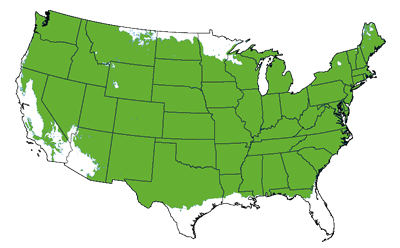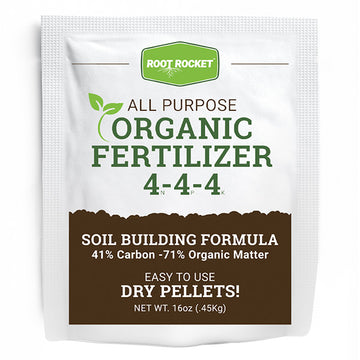Heritage Raspberry Bush
Product Details
 Growing Zones 4-8
Growing Zones 4-8
| Soil Type | Adaptable |
| Sunlight | Full, Partial |
| Drought Tolerance | Good |
| Mature Width | 4-5 Feet |
| Fall Color | Green |
| Bloom Color | White |
| Shipping Restriction | AK, AZ, HI |
The Heritage Everbearing Raspberry is the world's most popular red raspberry and it's easy to understand why! This delicious berry is large and packed with nutritional benefits. The Heritage Raspberry plant is fast-growing and highly prolific. Fruit is produced in summer and again in the fall. Enjoy fresh juicy raspberries much of the year!
The award-winning Heritage Raspberry Bush is hardy and easy to grow. Eat them fresh or make desserts and preserves. You are going to love the flavor of these sweet, yummy berries. These high-quality fruits don't crumble or mush when ripe like many other lesser raspberry varieties. The plump berries hold up to picking and freezing. Save the juice for your mouth and not your hands.
Heritage Raspberry Bushes do not need support like other raspberry bushes. These abundant berries are low maintenance. Plant them and get ready to harvest berries in the very first year.
Raspberries enjoy full to part sun and are extremely adaptable to any well-draining soil. This bush is drought-tolerant and disease resistant. Fertilize your raspberry bush when planting and in spring with a balanced, slow-release fertilizer to encourage growth and more berries. Prune back canes that are fruited after harvest for best results.
Order a Heritage Raspberry plant today before they are gone.
Do These Raspberries Need Trellis?
This raspberry variety can be grown as a stand-alone bush and does not need a trellis or fence to grow on. However, support is always helpful. Not only does a support structure help to keep the plant upright, but it also makes it easier to harvest the fruit, and it looks beautiful too.
Where Should I Plant This Raspberry Bush?
They should be planted in an area that receives full sun for at least 6-8 hours per day. It's also important that the location has well-drained soil and a ph level between 5.5 and 6.5. We recommend that you avoid planting them in a location that was previously used to grow other raspberries, as this can potentially lead to disease and pest problems.
Do These Raspberry Bushed Have Thorns?
The Heritage Raspberry plant does have thorns. Therefore, gardening gloves are suggested when handling this plant.
Are Heritage Raspberries Everbearing or Summer Bearing?
There are two types of raspberries: summer-bearing and everbearing. The Heritage Raspberry plant is an everbearing variety. This means that fruit grows on primocanes. Everbearing raspberry plants have the ability to provide a small summer crop on the canes from the previous year, and then a larger fall crop follows.
Planting
Before planting your Heritage Raspberry Bush, be sure to choose the right location and conditions for your new plant to thrive. Spring and fall are ideal times to plant. However, if you avoid the extreme temperatures of summer and winter, you can grow your raspberry plant almost any time of the year. Raspberry shrubs thrive in full sun and well-drained, moist, slightly acidic, nutrient-rich soil. Avoid planting in areas that are prone to standing water.
Once you have chosen your planting location, you should prepare the soil by removing any weeds and rocks and adding compost or other organic matter to the soil to improve its quality. You should dig a hole that is twice as wide and deep as the plant's root ball. Place the plant in the hole, spread out the roots to ensure they aren’t cramped, and then backfill the hole and lightly tamper it down firmly. Water it in deeply. Lastly, when transplanting your raspberry plant, it’s important to set it at the same depth it was growing in its original container.
Watering
Water your raspberry bush thoroughly and deeply at the time of planting and then 2-3 times weekly for the first 3 months. This will help your plant get established. During the growing and fruiting seasons, a raspberry will do best if the soil is kept moist. Adding a layer of 2 to 3 inches of mulch is highly recommended for all raspberry varieties, and the Heritage Raspberry plant is no exception. Mulching helps to maintain soil moisture, controls weeds and gives added protection during extreme temperatures.
Fertilizing
We recommend that you fertilize at the time of planting and then at least once every spring with a balanced, slow-release fertilizer. If you're planting your raspberry bush in a pot rather than in the ground, you should know that raspberries grown in containers need fertilization more often than those grown in the ground. Nutrients consistently leech out of the pot when you water and need to be replaced in order for the plant to thrive. If growing in pots is your preferred method, we recommend that you fertilize in early spring, late spring, and one more time in mid-summer.
Maintenance
Late winter is a great time for pruning any dead or crowded branches. However, if you have a hard time figuring out which areas are dead and which are simply dormant, prune in the spring after new growth has emerged. For new gardeners, it's easier to determine what needs to be removed at this time.
The best way to prevent disease and pests is by providing the appropriate care for your plants. The biggest pests of raspberry plants are birds. To solve this challenge, you can always put up bird netting to protect your crop. If positioned properly, this is an extremely effective deterrent. Aside from birds, the Heritage Raspberry plant is extremely hardy and naturally disease resistant. Proper location choice, watering, and fertilization are the keys to your success with this plant, and all plants in your garden.
Avoid planting your raspberries near similar crops. However, plants like garlic and chives will help keep pests around your raspberry bush at bay. Additionally, you may want to plant lavender, such as Phenomenal Lavender, or marigolds nearby.
For additional fruit options, be sure to browse our Dwarf Tree and Fruit Trees collections.














